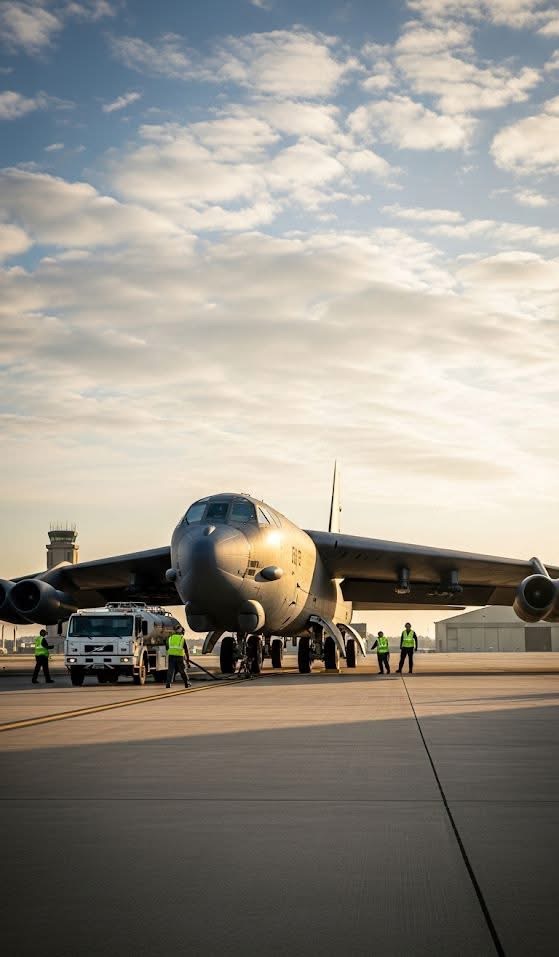
The Boeing B-52 Stratofortress is one of the most iconic and enduring military aircraft ever built. First introduced in the 1950s, this long-range strategic bomber remains a critical part of the United States Air Force (USAF) today. Its longevity, adaptability, and power have earned it a legendary status, making it both a symbol of Cold War deterrence and modern airpower.
Development of the B-52 began in the late 1940s, when the USAF sought a new heavy bomber capable of carrying nuclear weapons over intercontinental ranges. Boeing’s design eventually won the contract, and the first prototype flew in 1952. By 1955, the aircraft entered service, replacing the Convair B-36 Peacemaker. From the beginning, the Stratofortress was designed to fly high, carry heavy payloads, and deliver devastating strikes anywhere in the world.
The aircraft itself is a massive eight-engine jet with a wingspan of 185 feet and a length of 159 feet. Its most distinctive features are its high-mounted swept wings and the paired engine nacelles slung under them. Despite its size, the B-52 is surprisingly versatile. It can fly intercontinental distances without refueling, and with in-flight refueling it can reach virtually any target on Earth. Its maximum takeoff weight exceeds 480,000 pounds, allowing it to carry up to 70,000 pounds of bombs, missiles, or other weapons.
Originally built for nuclear deterrence during the Cold War, the B-52 has adapted to changing missions over the decades. In Vietnam, it carried out massive conventional bombing campaigns, including the famous “Operation Linebacker II” in 1972. In the Gulf War of 1991, B-52s launched some of the first air strikes and delivered precision-guided weapons alongside traditional bombs. They have since participated in conflicts in Afghanistan, Iraq, and Syria, providing both strategic strikes and close air support.
One of the reasons for the B-52’s incredible longevity is its ability to evolve. Over the years, the aircraft has received countless upgrades to avionics, engines, weapons systems, and communications. Modern B-52s can launch cruise missiles, drop smart bombs guided by GPS, and integrate with modern command-and-control networks. The U.S. Air Force plans to keep the Stratofortress flying into the 2050s, giving it an operational lifespan of nearly 100 years—an almost unheard-of achievement in aviation history.
Beyond its combat role, the B-52 also serves as a powerful symbol of U.S. airpower. Its mere presence often acts as a deterrent, as demonstrated by frequent patrols and exercises around the world. The aircraft’s distinctive silhouette and thunderous roar of eight jet engines have made it a recognizable figure both on the battlefield and in popular culture.
In conclusion, the B-52 Stratofortress is more than just an aircraft—it is a living piece of history and a testament to engineering excellence. Designed for the Cold War but continually modernized, it bridges the past, present, and future of strategic bombing. Few aircraft have matched its combination of size, endurance, and adaptability. As it continues to serve well into the 21st century, the B-52 remains a cornerstone of U.S. airpower and an enduring symbol of strength in the skies.


